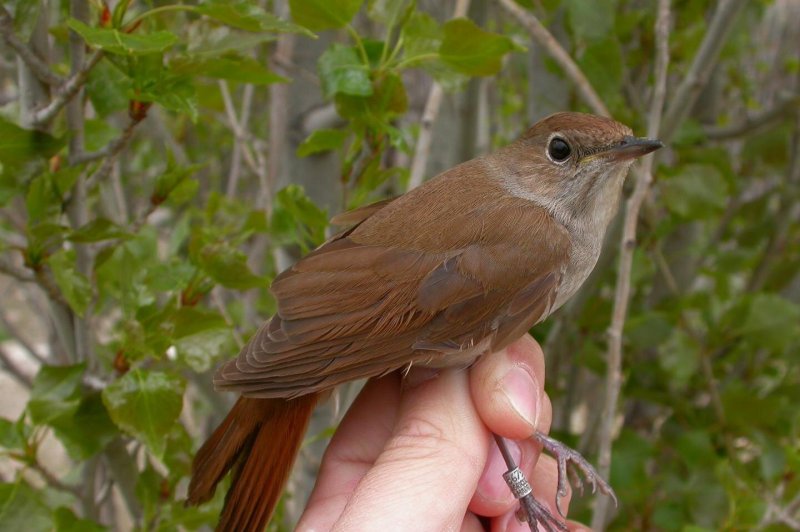New research shows that climate change may be affecting the wing shape of nightingales, making them less able to complete their annual migration. Photo by Javier de la Puente
April 1 (UPI) -- The seasonal long-distant trek from Europe and Asian to sub-Saharan Africa is getting harder and harder for the common nightingale.
Scientists have discovered a link between Earth's changing climate and the nightingale's wingspan. As Earth gets hotter and drier as a result of climate change, the migrating songbird's wings are getting shorter.
For the study, published Wednesday in the journal The Auk: Ornithological Advances, scientists analyzed 20 years of data on wing shape and size variation among a pair of common nightingale populations living in central Spain.
The data showed birds with shorter wingspans were less likely to return to their breeding grounds after their first round-trip to Africa. But what accounts for the relationship between wingspan, migration and survival was a question for the researchers.
Authors of the new study hypothesized that wingspan is one of several traits in a migratory gene package. Songbirds like the common nightingale have adapted to long distance travel by evolving a longer wingspan, faster resting metabolic rate, larger clutch size and shorter lifespan. Scientists suspect these traits are controlled by the same group of genes.
While such a gene package surely offers benefits, environmental stressors putting negative pressure on one of the traits can suppress other traits, as well.
Over the last several decades in central Spain, the arrival of spring has shifted and summer droughts have increased in length and intensity. As a result, nightingale's have a smaller window in which to produce and raise young. Scientists suspect birds producing smaller clutches of eggs have an advantage.
If environmental pressures are depressing the nightingale's clutch size, it's like other traits in the migratory gene package are being influenced. As birds produce smaller clutch sizes, they may also grow shorter wings.
But while a smaller clutch size can prove advantageous, helping the common nightingale raise young in a shorter amount of time, a shorter wingspan makes long-distance travel more difficult. In this case, a shrinking wingspan serves as an example of a maladaptive change.
"There is much evidence that climate change is having an effect on migratory birds, changing their arrival and laying dates and their physical features over the last few decades," lead author Carolina Remacha, an ecologist at the University of Madrid, said in a news release. "If we are to fully understand how bird populations adapt to new environments in order to help them tackle the challenges of a rapidly changing world, it is important to call attention to the potential problems of maladaptive change."















